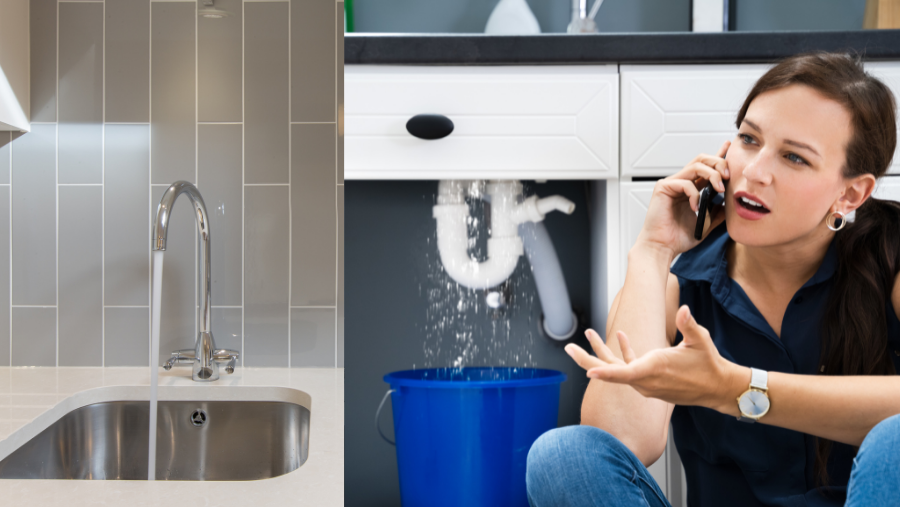Protecting Against Water Damage in the Bathroom
Protecting Against Water Damage in the Bathroom
Blog Article
Have you been looking for tips on Common Causes of Water Damage in a Bathroom?

The washroom is exceptionally at risk for wet buildup as well as prospective water damages because of the frequent use of water in it. This article offers simple examination strategies to aid finding water damages risks.
The regular use of water in the bathroom makes it exceptionally prone for damp accumulation and possible water damages. By checking it routinely, you can reduce water relevant problems.
The complying with set of inspections is very easy to do as well as should be done as soon as in every 3 months in order to keep your bathroom healthy as well as to avoid potential water problems triggered by the bathtub, the shower, pipeline joints as well as plumbing, sinks, cabinets, and also the bathroom
Do not overlook performing these assessments and be thorough while executing them. Bear in mind that these simple assessments can save you a great deal of money by providing very early indicators for water damages
Sinks as well as Cabinets
Sinks and closets are subjected to dampness as well as humidity everyday and are usually neglected. Evaluate routinely under the sink and also on the kitchen counter above it. Fix any type of drip in the catch as it may recommend drain troubles. Browse the sink, slow draining pipes might suggest an obstructed drain. Change sink seals if they are broken or loosened.
Bathtub and also Shower
The shower and tub require special focus and upkeep. Check the ceramic tiles and replace if fractured. Ensure that there is no missing out on grout in between the floor tiles. Examine and also replace broken caulking at joints where the wall surfaces meet the flooring or the bath tub. Clogged drains pipes and also pipes issues will certainly avoid the bath tub from drying and might indicate major troubles beneath the tub. Talk to a professional instantly to avoid architectural damage. Take note of stainings or soft locations around the bathtub walls as they might show an inner leak.
Plumbing
Signs for water damage are difficult to identify since many pipelines are mounted inside the walls.
Pay special interest to floor covering and also wall surfaces moisture and spots as they might show an invisible plumbing problem. Check wetness levels in adjacent areas too.
The Commode
The toilet is an at risk water joint. Check the water lines as well as look for leakages around the toilet seat, in the hose pipe, as well as under the water container. If you identify any indications of wetness on the flooring around the commode, check for leaks in the toilet rim as well as container seals.
Realize that hanging toilet bowl deodorants enhances the opportunities for blockages.
Water Damage Signs In The Bathroom To Avoid Cleanup
Musty smell
This is one of the easiest signs to catch because musty smells are so odorous. The damp, earthy, moldy smell should be a big red flag. The smell will develop when moisture gets trapped in surfaces, and begins to facilitate mold growth. Leaking pipes under cabinets, inside walls, and behind shower fixtures will cause moisture to stay trapped and not dry, which will lead to mold growth and spread. As soon as you notice any musty smells in your bathroom, have it checked for hidden water damage and cleanup signs.
Visible mold
If the smell isn’t there to give it away, sometimes you will actually see mold growth. Finding mold in your bathroom is a serious problem, because mold is very harmful to your health. By the time mold growth is visible, it also means that water damage has already occurred and been present for some time. The only way the mold problem can be resolved is to find the source of the moisture and get it stopped. To safely and adequately remove mold, you need to have professionals handle the remediation. Do not waste any time in getting mold problems addressed, fixed, and sanitized so that you can protect you and your family from the many respiratory symptoms caused by mold exposure.
Damaged floors
Bathroom floors should be able to withstand some exposure to water while still remaining in good condition. However, when excess exposure or water leaks occur, they will begin to damage even the most water-resistant flooring. If you notice any cracking, bubbling, staining, or warping on your bathroom floors, there is probably a water leak somewhere causing the distortion. If you notice areas of the floor have become softer, or even have a spongy feeling, there is probably damage to the subfloor. Subflooring is typically made up of plywood. When plywood is exposed to water or moisture, it will absorb it. Once it has become saturated, the weight of the excess water will cause the wood to swell and soften. Check the floors in your bathroom frequently to catch any of these sings before they lead to damaged subflooring.
Changes on walls
When water leaks behind walls, it will cause changes in the drywall. Peeling plaster, blistering paint, and soggy wallpaper are all good indicators that excess water is building up behind the wall. Water leaking behind drywall will cause it to swell and be soft to the tough. If you start to notice gaps along the trim of your walls, or where tile meets the wall, it could also be a strong indicator that there is a leak behind the wall. Any changes, distortion, or damage on the walls should be evaluated as soon as you notice it to prevent further water damage and cleanup.

We had been shown that report about How to Fix a Water Damage Bathroom through an associate on another domain. For those who liked our page kindly do not forget to share it. I appreciate reading our article about How to Prevent Bathroom Water Damage.
Visit Link Report this page